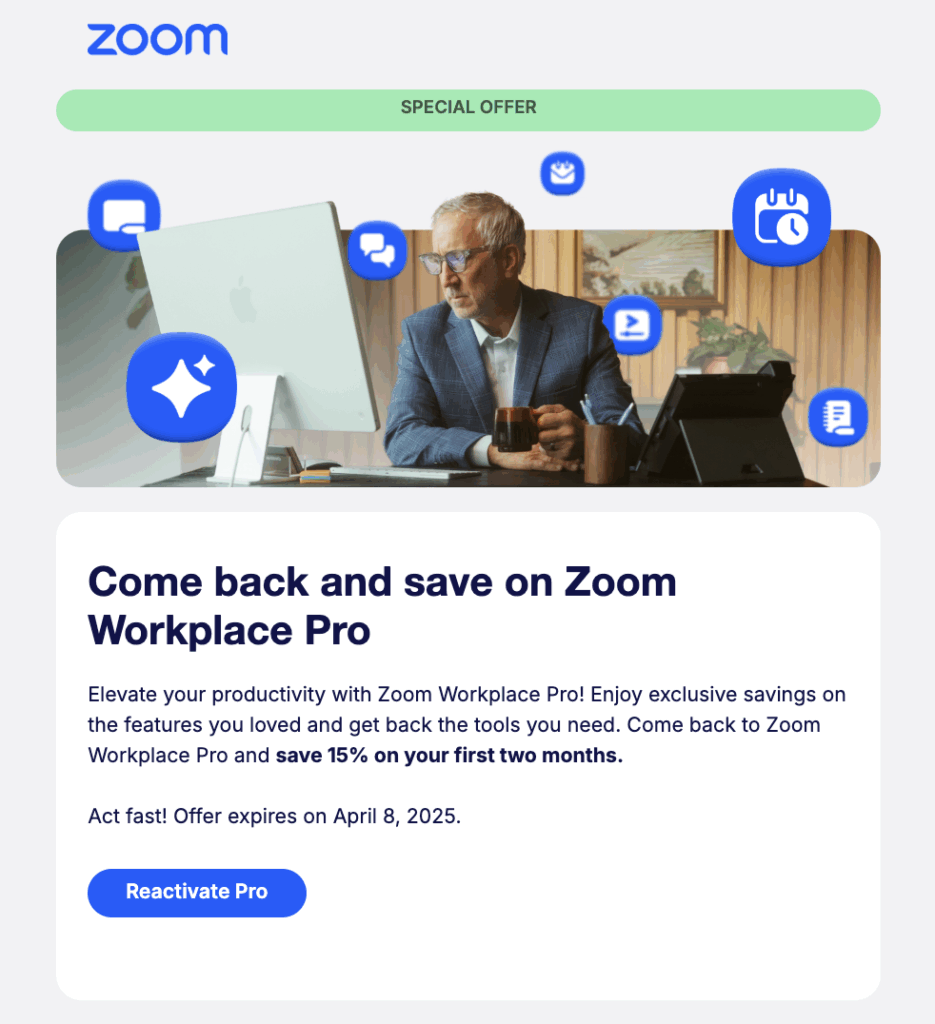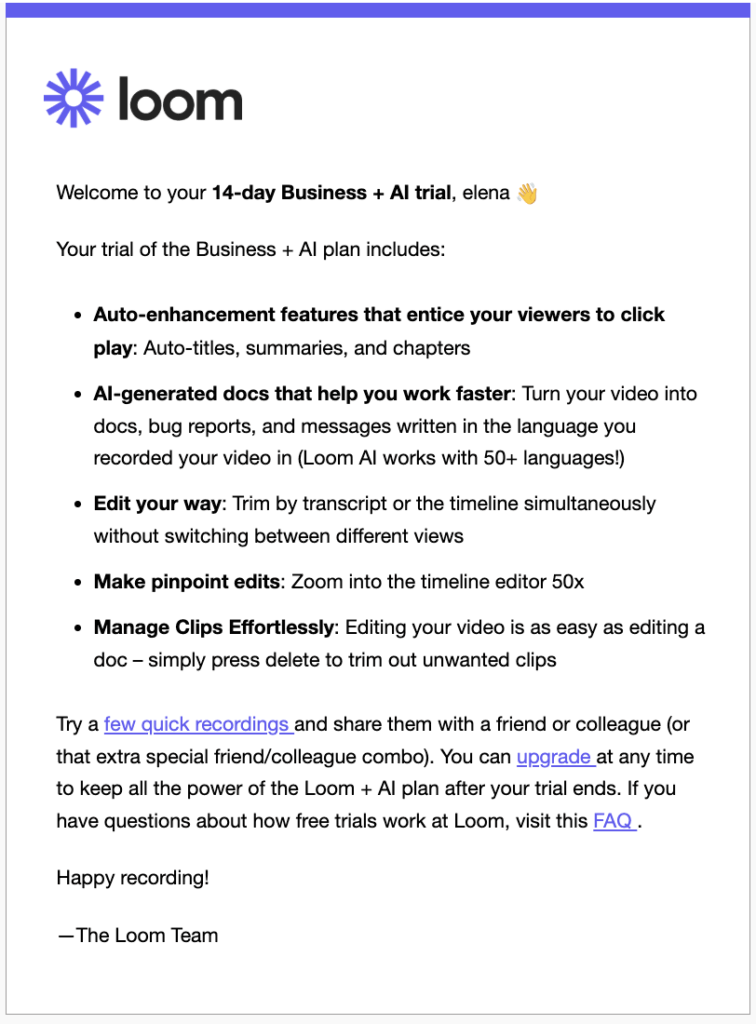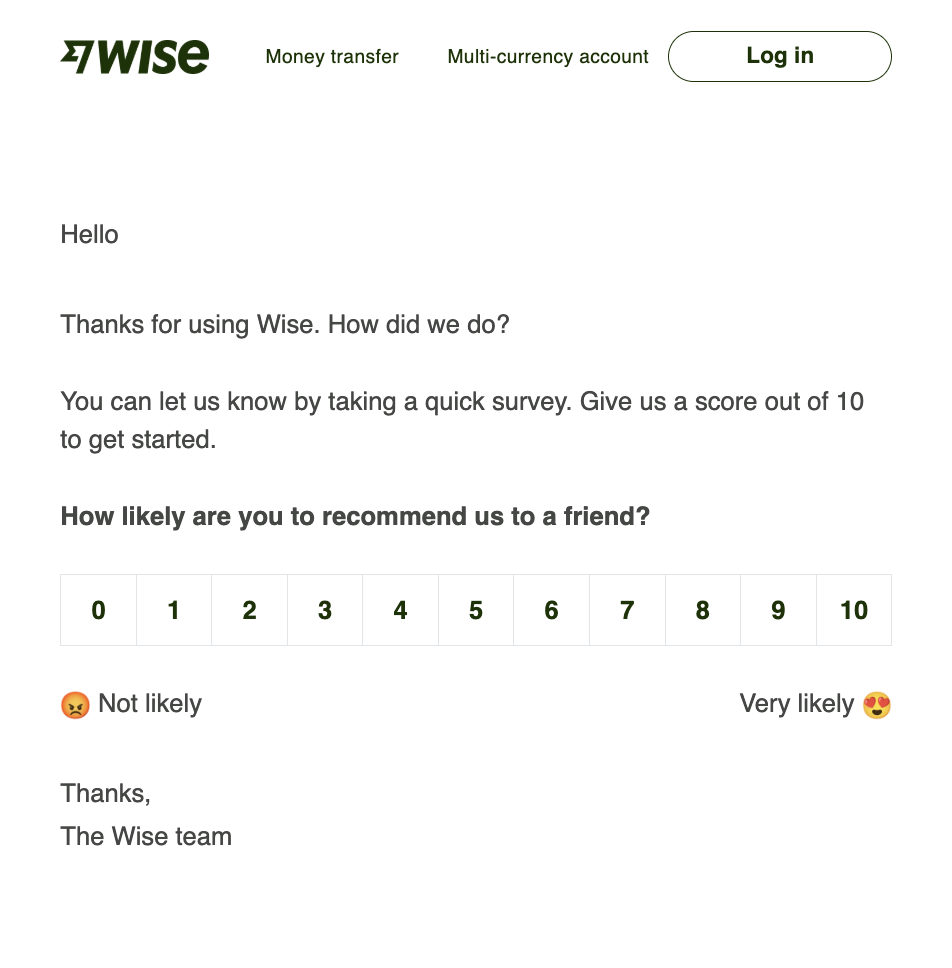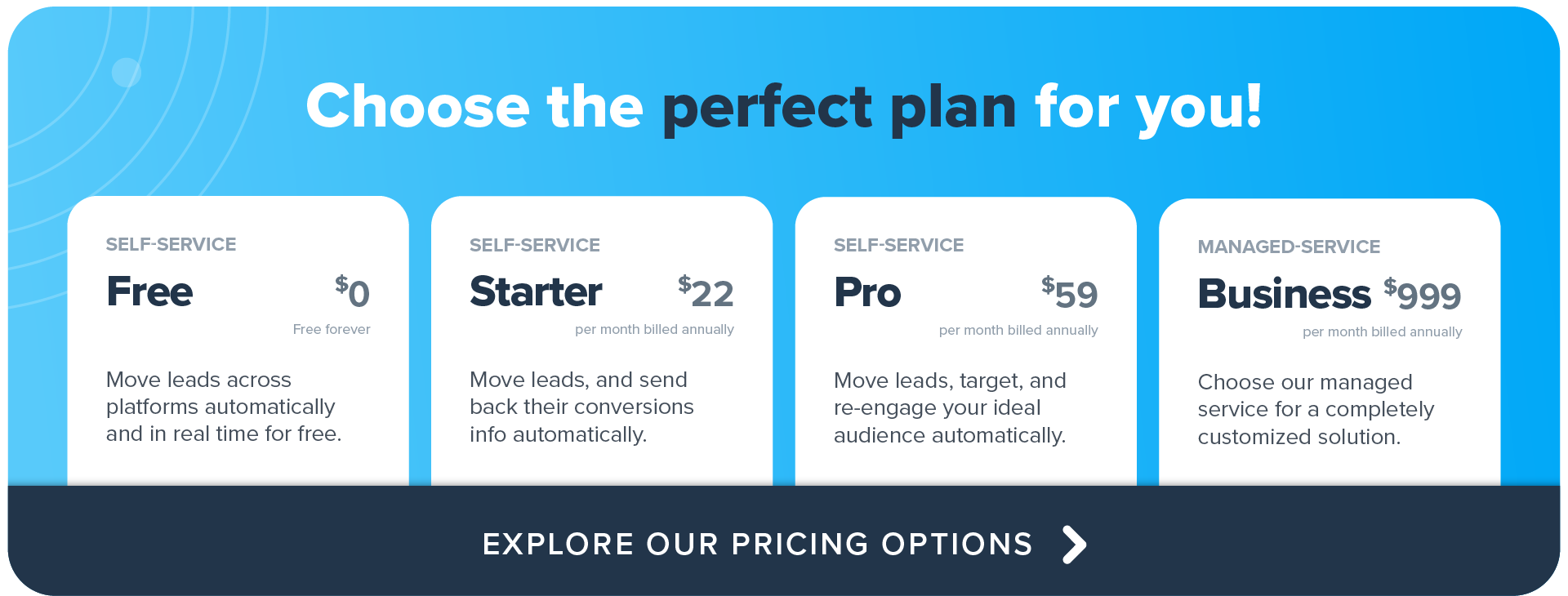
Marketing automation is widely adopted because it works. It cuts back on manual tasks, lowers costs by reducing resource-heavy efforts, and improves marketing performance through data integration and rule-based actions.
But where can you get started with your marketing automation?
- What is marketing automation?
- What are examples of marketing automation?
- 1. B2B marketing automation examples
- 2. B2C marketing automation examples
- 3. Email marketing automation examples
- 4. CRM marketing automation examples
- 5. Feedback campaign automation example
- 6. Examples of marketing automation tools
- Why you should automate your workflows with LeadsBridge
- Final thoughts
This article outlines five actionable marketing automation examples across sectors and toolsets. It includes use cases like lead capture, email sequencing, and retargeting.
For instance, here’s how LeadsBridge connects advertising platforms to your favorite CRMs or email tools for immediate lead data transfer, which eliminates delays and minimizes data loss.
What is marketing automation?
Marketing automation is all about simplifying the marketing process. It’s in its name: automation enables businesses to automate repetitive or time-consuming marketing activities through the use of technology.
By operating automatically, marketing automation frees up time and resources in the marketing process.
What are examples of marketing automation?
The list of things that you can do through marketing automation is endless, but here are some marketing automation examples that will help you understand how much time and effort you can actually save thanks to automation.
Email marketing automation
- Drip campaigns: Automated email series that send targeted messages to subscribers at predefined intervals.
- Behavior-based emails: Sending emails based on user actions, such as abandoned carts or website visits.
- Lead nurturing: Automatically sending relevant content to leads based on their stage in the sales funnel.
Social media marketing automation
- Scheduled posts: Scheduling social media posts in advance to maintain a consistent online presence.
- Social media monitoring: Monitoring social media mentions and engagement in real-time.
- Auto-responders: Automated responses to comments or messages on social media.
Content marketing automation
- Content scheduling: Automating the publication of blog posts, articles, and other content.
- Content personalization: Delivering content tailored to the preferences and behavior of website visitors.
Lead generation and management
- Forms and landing pages: Automatically capturing leads through web forms and directing them to appropriate lists.
- Lead scoring: Assigning scores to leads based on their engagement and behavior to prioritize follow-ups.
Customer segmentation
- Segmentation rules: Automatically categorizing contacts or leads based on criteria such as demographics, behavior, or purchase history.
- Dynamic content: Displaying personalized content to different segments of your audience.
Analytics and reporting
- Performance metrics: Tracking key performance indicators (KPIs) such as email open rates, click-through rates, and conversion rates.
- ROI analysis: Calculating the return on investment for various marketing campaigns.
A/B testing
- Automating split tests to compare different marketing strategies, such as email subject lines, CTAs, or landing page designs, to determine which performs better.
E-commerce automation
- Shopping cart abandonment: Sending automated reminders to users who leave items in their online shopping carts.
- Product recommendations: Suggesting products to customers based on their browsing and purchase history.
Customer retention and loyalty programs
- Automating loyalty point accrual and rewards redemption.
- Sending automated follow-up emails to customers after purchases or on special occasions, such as birthdays.
SMS and mobile marketing automation
- Sending automated text messages to customers for promotions, reminders, or updates.
And these are just a few marketing automation examples, just to give you an idea of its immense potential. Now, let’s get into the details of five practical marketing automation examples that will help you boost your marketing strategy.
1. B2B marketing automation examples
B2B customers tend to make longer-term purchases, often with ongoing service or support needs. So customer retention is the lifeline of B2B businesses. Marketing automation helps deepen relationships and ensure long-term loyalty.
Here’s an example of post-sale engagement campaign by Zoom, offering a discount for an existing user who has downgraded to free tier:

You can use it to:
- Set up post-sale engagement workflows to onboard new clients, educate them about your product, and stay top-of-mind. This builds trust and encourages repeat business.
- Use behavior-based triggers to identify churn risks. If a client hasn’t logged in or engaged with your platform recently, the system can alert your team or automatically send a check-in message.
2. B2C marketing automation examples
B2C markets are larger and more competitive, and purchases are often one-time or at best occasional. That’s why for B2C businesses, lead generation is in focus over retention.
To do this successfully, you need to capture attention quickly and guide new prospects into the funnel. Here are some useful B2C marketing automation examples:
- Trigger welcome email series as soon as someone signs up or shows interest. This helps build rapport fast and nudges them toward a first purchase with curated content or limited-time offers.
- Use behavioral targeting for ads and landing pages. Tailor messaging based on browsing activity or referral source to boost conversion rates and bring in more qualified leads.
Looking for literal B2C marketing automation examples? Seasonal discounts are a go-to campaign idea for many B2C businesses. Here’s how United Colors of Benetton did it:

3. Email marketing automation examples
Email marketing automation is where most businesses start when it comes to marketing automation. Personalized emails can be automated and sent to specific leads based on their interests, behavior, or other factors.
Here are some easy yet effective automation examples from email marketing agencies to help you get started:
- Send a welcome email. Welcome emails have a 91.4% open rate and a 42% higher read rate than the average email.
- Set up triggered email campaigns based on specific actions, such as when a customer signs up or completes a purchase. You can also segment your email list according to interests and preferences and then automatically send targeted messages.
Personalized email campaigns have about 20% higher conversion rate compared to generic newsletters. Simply because they make customers feel special.
If you’d like to see a step-by-step- guide on how to set up a marketing automation workflow, check out this article: Top 5 marketing automation workflows to improve your business.
Take a look at this email marketing automation examples by Loom:

4. CRM marketing automation examples
With CRM marketing automation, the focus is on the customer relationship. You can easily manage your leads and customers’ interactions, such as keeping track of their website visits, activity history, and social media interactions all in one place.
Some CRM marketing automation examples that you can find useful include:
- Automating tasks, such as lead generation, sales tracking, and event registration. For instance, when a sales rep logs a sale, the customer is automatically moved to the next stage of the sales process: nurturing. This automation saves time and ensures no lead falls through the cracks.
- Automatically assigning leads to the most appropriate sales rep based on their characteristics, interests, or priorities.
5. Feedback campaign automation example
The best businesses out there care about their customers’ voices. It helps find and fix issues while showing what they want more of.
Feedback campaigns help you collect real insights that drive better products, stronger customer relationships, and higher retention. Marketing automation makes it easy to launch and manage these efforts at scale.
Here are some feedback campaign ideas:
- Send automated post-purchase or post-interaction surveys via email or SMS. Ask customers to rate their experience, share suggestions, or leave a review. Timing these shortly after engagement increases response rates.
- Trigger NPS (Net Promoter Score) surveys at key milestones in the customer journey. Use the results to identify loyal advocates or at-risk users, and route them into the appropriate follow-up sequence.
Looking for an inspirational Feedback campaign automation example? Here’s how Wise does it:

6. Examples of marketing automation tools
Marketing automation tools can help you automate business processes so that you have more time to focus on growing your company. Here are some examples of marketing automation tools that can help you optimize your marketing strategy.
HubSpot
HubSpot is a comprehensive inbound marketing and sales automation platform. It offers different feature-rich dashboards for email marketing, lead management, social media scheduling, and more.
Pardot
Pardot is a marketing automation tool by Salesforce®. It essentially focuses on B2B marketing automation, lead nurturing, and lead scoring.
Mailchimp
Known for its email marketing capabilities, Mailchimp also offers automation features to create email workflows based on user behavior.
ActiveCampaign
ActiveCampaign provides email marketing, marketing automation, and CRM features. It’s best suited for small and medium-sized businesses.
GetResponse
GetResponse is an all-in-one marketing platform that includes email marketing, automation, landing page creation, and webinar hosting.
LeadsBridge
LeadsBridge automates your customer acquisition workflows from major ad platforms with seamless integrations to your revenue tech stack.
With over 380 integrations, LeadsBridge helps you sync your leads, target custom audiences, and track conversions to boost sales and productivity automatically and in real time.
Here are all LeadsBridge integrations specific for marketing automation.
Why you should automate your workflows with LeadsBridge
We talked about several examples of marketing automation tools. However, LeadsBridge is the automation tool specifically designed for marketers and advertisers who use social media’s native forms to generate leads.
For teams looking to scale real-time automation pipelines, deploying workflows on a containerized automation platform ensures reliability and flexibility. With built-in CI/CD and support for webhooks, queues, and background workers, it’s ideal for marketers and engineers alike who want to automate lead syncs, triggers, and campaign workflows without worrying about infrastructure.
Here is why you should consider adding LeadsBridge to your marketing strategy.
Say goodbye to slow, manual, and generic lead syncs
- Get in touch with new leads instantaneously by effortlessly synchronizing lead data from top ad platforms in real-time.
- Cut down on time and effort with industry-specific integrations designed for marketing and sales workflows.
- Sort and channel leads as they arrive, ensuring they reach the right funnel every time.
Discover your most valuable customers
- Boost your return on ad spend by pinpointing your ideal audience.
- Reduce your advertising costs by connecting with the perfect audience.
- Create actionable customer segments from various sources and revitalize your marketing approach.
Measure the true impact of your online campaigns
- Gain insights into campaign performance by attributing conversions from online advertising.
- Enhance your funnel view with accurate data integration from Facebook Conversions API and Google Offline Conversions Tracking.
Final thoughts
Marketing automation is a great way of improving your efficiency, better targeting your audience and freeing up your time to concentrate on other more important marketing activities.
The power of marketing automation is immeasurable, and we’ve only highlighted 5 examples from a range of sectors and tools. As you can see, it’s not just a tool for big businesses; it can benefit small businesses and start-ups just as well.
By automating your marketing activities, you can achieve better results with less effort, and optimize your customer experience for maximum impact. So why not try implementing some marketing automation processes to your business today?
Build the automation you need by browsing through all the possible integrations here.





































